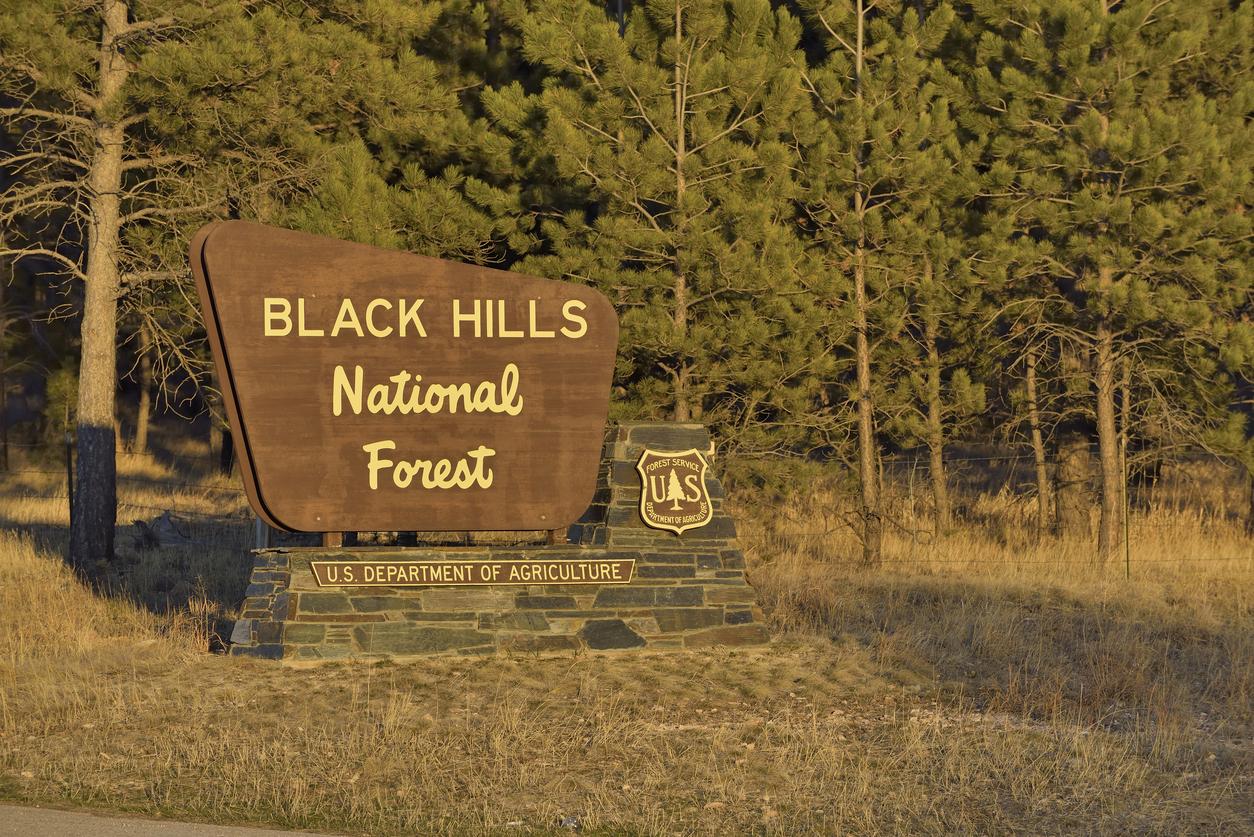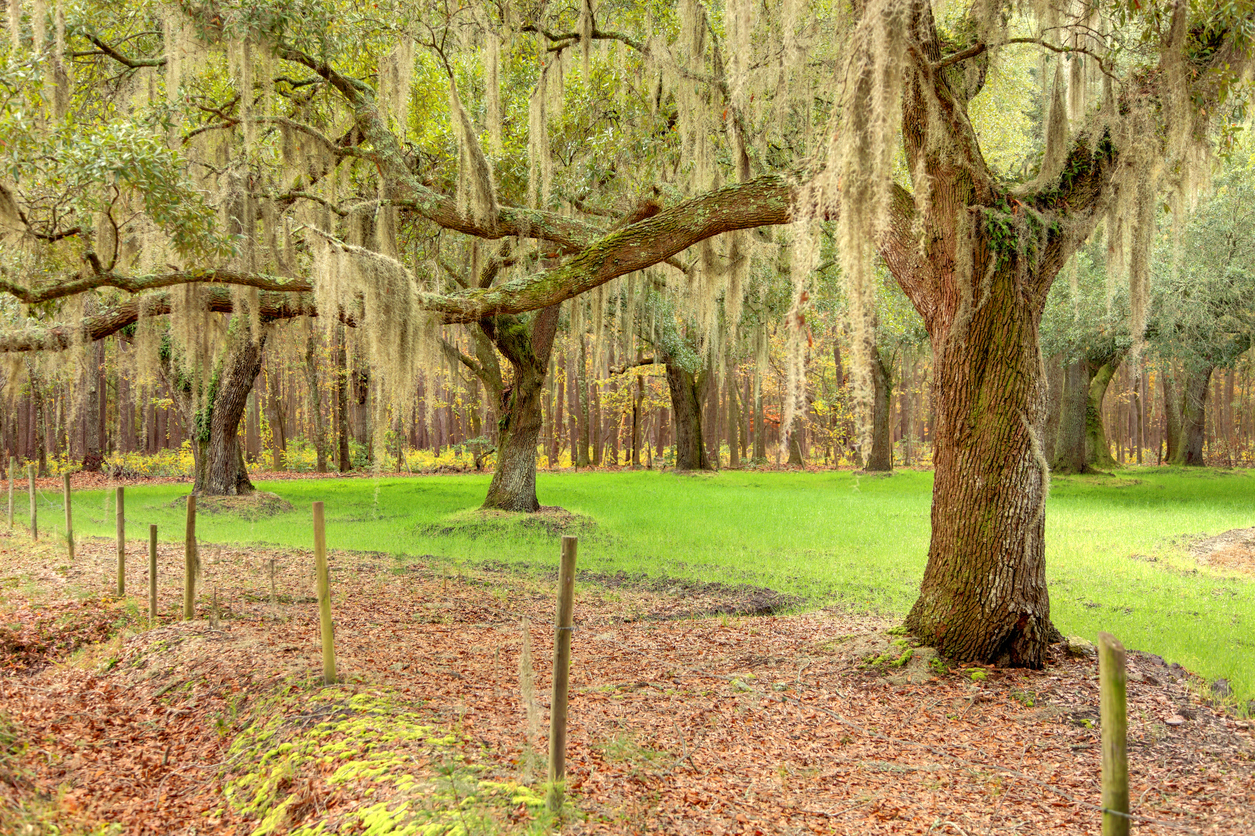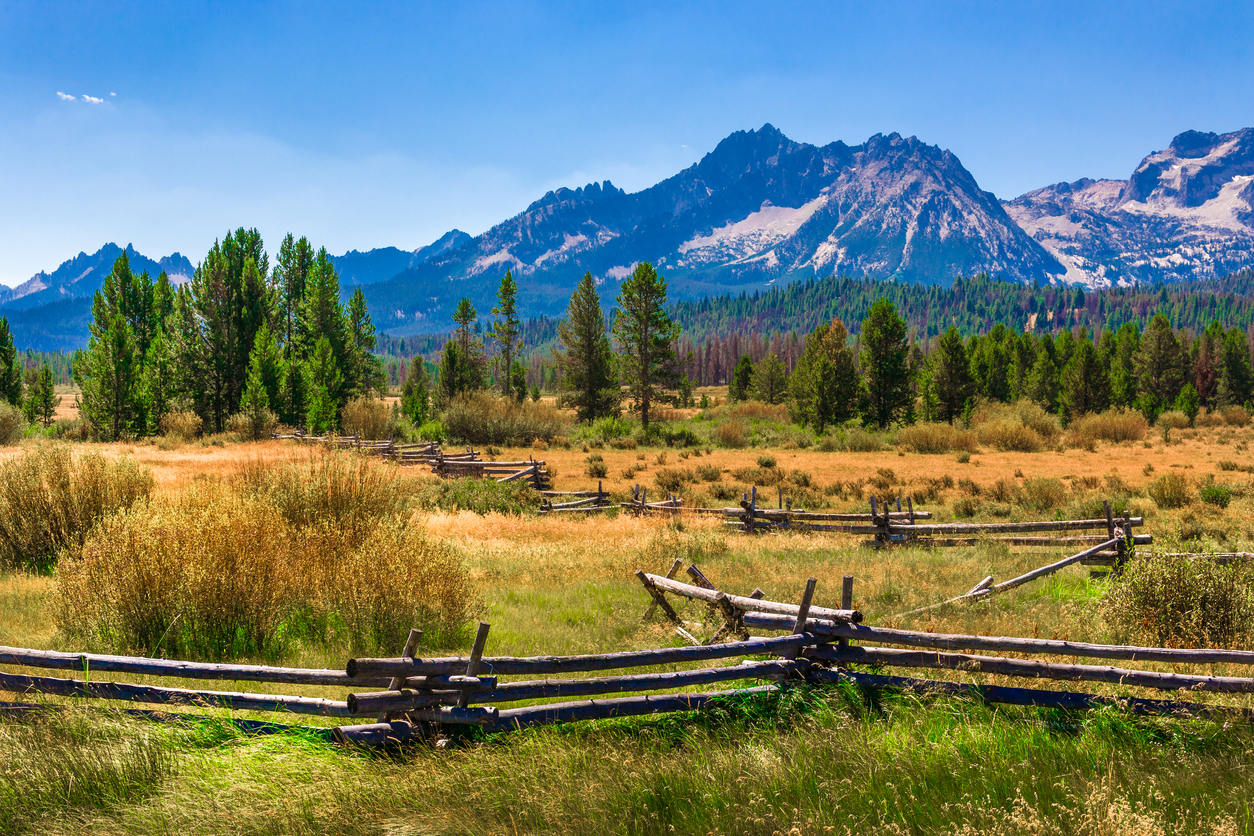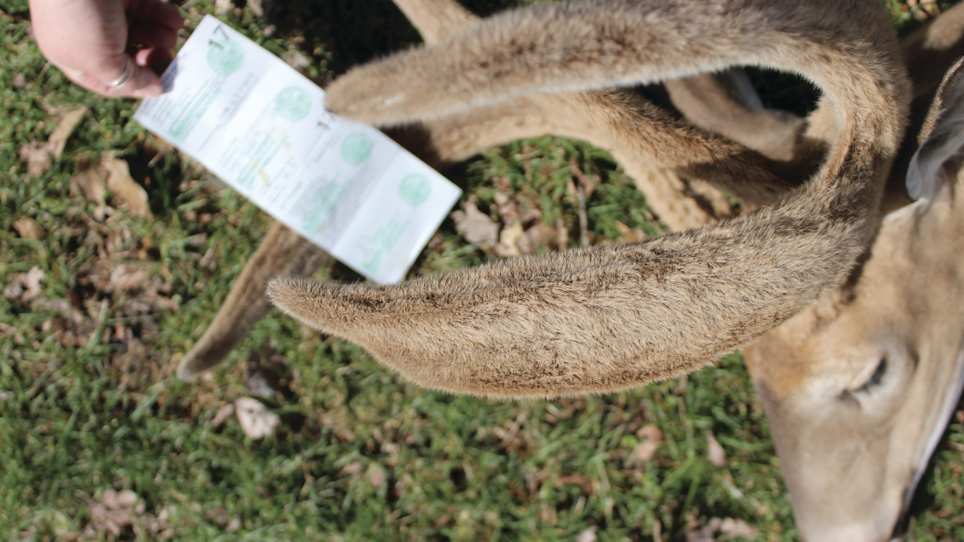If you’re looking to hunt deer in velvet this hunting season, you’ll need a game plan. We've got seven states in mind that can make your plan a reality.
To start, here are a few quick facts. Most bucks shed their velvet within the first week of September. Because of early season-opening dates, this is mainly a bowhunter-only opportunity to hunt deer in velvet. South Carolina is the only exception, with select areas designated for gun hunters.
Whether you choose a DIY hunt or opt for an outfitter, let’s take a look at where your best spots are to wrap your tag around velvet antlers.
Kentucky
Season: Sept. 1, 2018 – Jan. 21, 2019
Weapon: Archery
Nonresident License Fees: Annual hunting, $140. Deer permit, $120 (two deer)
Application Info: Licenses and permits can be purchased over the counter.

Deer densities are the highest in central and northern Kentucky. However, quality bucks are taken all over the state every year. Photo: Kentucky farmland (iStock)
I’ve hunted Kentucky several times and recommend the Peabody and Land Between the Lakes Wildlife Management Areas (WMA). Do your research, as there are many smaller WMAs scattered across the area.
If you choose to hunt early in Kentucky, you will not be alone. Because of the popularity of this state with big velvet-clad bucks, competition is tough. Do your scouting and get far off the beaten path and away from other hunters.
When I asked Gabe Jenkins, deer and elk program coordinator with the Kentucky Department of Fish and Wildlife Resources, where to hunt, his answer was, “Anywhere in the state is a great place to hunt for a velvet buck. Deer densities are the highest in central and northern Kentucky. However, quality bucks are taken all over the state every year. All of our public land is open to hunting, and one could come and try to hunt a velvet buck every year on our WMAs. Obtaining permission on private land can be hit or miss. It really depends on the landowner and region you’re trying to hunt.”
There are a number of good outfitters in Kentucky. For the past three seasons I’ve hunted with Central Kentucky Outdoors.
Jenkins went on to say, “The state doesn’t estimate success rate because so many of our hunters are license exempt it makes it difficult to get an exact success rate, but we usually estimate around 35 percent success rate for our deer hunters.”
Baiting is also legal in Kentucky on private ground. For more information, visit www.fw.ky.gov/Pages/default.aspx
Montana
Season: Sept. 1, 2018 – Oct. 14, 2018
Weapon: Archery
Nonresident License Fees: Annual hunting, $625
Application Info: The drawing deadline ends in March, but hunters can still purchase preference points for next year’s drawing until September 30.

If an archer is dedicated and does his homework, he stands a pretty good chance of taking a decent whitetail in Montana. Photo: iStock
There are a couple western states that can offer archers a check on their bucket list, the first being Montana. The deer out here will be a little easier to scout than deer found in Kentucky, due to the wide-open spaces and wooded river bottoms.
Game Management Bureau Chief John Vore of the Montana Fish, Wildlife & Parks says “Northwest Montana, our administrative Region 1, is the best place in Montana to hunt whitetail deer, although there are very good populations of whitetails in the rest of the state wherever there is riparian habitat or irrigated fields. There is also a lot of public land in Montana, so there is plenty of opportunity.
“I can't give you a success rate, because we don't break down our harvest surveys by how many archers were hunting whitetails early in the season. But I can say that if an archer is dedicated and does their homework, they stand a pretty good chance of taking a decent whitetail. Of course, a hunter has to have landowner permission to hunt on private land. Difficulty in gaining access varies with the individual landowner.”
Vore continued, saying, “You should be aware that because of concerns about CWD, hunters cannot transport velvet-covered antlers from Montana to most states. And there are also regulations about moving animals within Montana if they were taken in CWD-positive areas of the state. You will see that the regulations talk about removing all meat, flesh and tissue. Antler velvet is a tissue.
“Unfortunately, CWD is part of the deer management world now, and we take it very seriously here in Montana. We need to do all that we can to keep disease prevalence low and prevent it from spreading.”
For more information, visit www.fwp.mt.gov/hunting/
Wyoming
Season: Sept. 1, 2017 – Oct.14, 2017 (2018 dates had not been set when this article was written)
Weapon: Archery
Nonresident License Fees: Annual hunting, $374
Application Info: The drawing deadline ends in March, but hunters can still purchase preference points for next year’s drawing until September 30. Leftover licenses are often available over the counter.

Prime deer country can be found near the Black Hills, but don't rule out private land. There are local ranchers who would welcome your bow and arrows. Photo: iStock
If you have your heart set on hunting a velvet buck out West, you might want to consider the northeast corner of Wyoming. Doug Brimeyer, deputy chief of wildlife for the Wyoming Game and Fish, said nonresidents should concentrate their efforts in Region A. This is where the Black Hills National Forest is located. Brimeyer also said that Region Y is another good option. This is where the eastern slopes of the Bighorns can be found.
I was also told that there is some good private land available for hunting big whitetails. You might have to pay a trespass fee, though. Normally, this will not be much, and you will not encounter as many hunters on private ground.
Brimeyer also said some ranchers experiencing damage from whitetails will allow hunters on their land without a trespass fee. Finding these ranchers will, of course, require some work. I was able to hunt private ground a few years back by calling the game warden and asking if he knew of any ranchers experiencing problems with whitetails. Within a day, I was in touch with a rancher and hunting prime whitetail ground, and within a couple days, I had my tag filled.
Like in neighboring Montana, expect to see deer in Wyoming out feeding in the alfalfa fields. In the vast open areas of these two states, a good pair of optics will allow you to view bucks at a distance. I’ve seen as many as 50 bucks in one day hunting this open country.
For more information, visit www.wgfd.wyo.gov/Hunting/Hunt-Planner/Deer-Hunting
North Dakota
Season: Opens Aug. 31, 2018. Closing date has not been published by the state yet, but it is likely to be sometime in January 2019.
Weapon: Archery
Nonresident License Fees: $250
Application Info: Permits can be purchased over the counter.

Areas south and west of the Missouri River hold more deer than other regions in North Dakota. Photo: Missouri River, North Dakota, iStock
If you are looking for a do-it-yourself hunt, North Dakota is the place. Public land is everywhere, and access to private ground is not hard to gain.
Besides public land, the state has other options called Private Land Open to Sportsmen (PLOTS). This is a program where landowners sign up to allow hunters a place to hunt. It is walk-in only. For more info, contact the North Dakota Game and Fish Department.
William Jensen, biologist with North Dakota Game and Fish, said there is a good population of whitetails across the state, but the areas south and west of the Missouri River hold more deer.
Do your homework for this state and you will have an exceptional hunt for your $250 permit.
For more information, visit www.gf.nd.gov/hunting/
Nebraska
Season: Sept. 1, 2018 – Dec. 31, 2018
Weapon: Archery
Nonresident License Fees: $249 for application and $242 for OTC. There is a $7 nonrefundable application fee.
Application Info: Permits can either be applied for in a draw or bought over the counter until season closes.

The archery success rate statewide was 24 percent in 2017. The season opens September 1, and the first week is the best option for velvet bucks.
The state has quite a bit of public land. There are about 800,000 acres of publicly-owned land, both state and federal. About 270,000 acres are available through the state's excellent Open Fields and Waters program, which pays private landowners to allow public hunting access to their land. And the Federal CRP-MAP program adds a lot of private land acreage that's open to walk-in hunting access.
Kit Hams, big game program manager with the Nebraska Game and Parks Commission, says, “Archery hunting in early September is the only opportunity to take whitetail in velvet. Archery success rated statewide were 24 percent in 2017. The season opens September 1, and the first week is the best option for velvet bucks.”
When I asked about public ground, Hams replied, “Public lands along rivers and streams can be located in our Public Access Atlas, Harlan County Reservoir, Lake McConaughy, Calamus, Sherman, Davis Creek, Swanson, Enders, Merritt, Medicine Creek, Red Willow Reservoirs, as well as several public areas adjacent to the Missouri River, would be good options.”
For more information, visit www.outdoornebraska.gov/deer/
South Carolina
Season: Aug. 15, 2018 – Dec. 31, 2018
Weapon: Archery and firearm in Zone 3
Nonresident License Fees: $125 hunting license and $100 big game permit. Additionally, a $76 permit to hunt on WMAs.
Application Info: Licenses and permits can be purchased over the counter.

South Carolina has the earliest opening season of any state. And, if you only hunt with a gun, this state is the only chance you have at tagging a velvet buck. Photo: iStock
If you prefer to hunt with a gun, this state is the only chance you have at tagging a velvet buck. The hunting in South Carolina is not the best for a Boone and Crockett buck, but with almost an entire month to get a shot at a velvet buck, don’t overlook it.
There is not a lot of public land available to hunt, so many hunters have to pay the extra expense of hiring an outfitter. With the public land that is available, regulations vary greatly from one to the other, so that can get tricky. Plus, in some parts of the state, dogs can be used to hunt deer, and there is no Sunday hunting on WMAs. All of this needs to be taken into consideration if you plan on hunting in South Carolina.
When Charles Ruth, deer project coordinator for the South Carolina DNR, was asked where the best parts of the state are to bag a trophy buck, he said the state is more known for long seasons and liberal bag limits rather than trophy bucks. Anderson, Aiken and Orangeburg are some of the better counties for harvesting a trophy buck, but only 13 bucks have been killed in the state that would qualify for Boone and Crockett recognition.
For more information, visit www.dnr.sc.gov/hunting.html
Idaho
Season: August 30, 2018 – Ending dates vary by location
Weapon: Archery
Nonresident License Fees: $154.75 hunting license and $301.75 for deer permit
Application Info: Tags are sold on a first-come-first-serve basis, and often there are tags available late into the year.

Just about any area north of the Salmon River will have strong whitetail numbers. Idaho hunters enjoy a success rate topping 40 percent annually.
This is not the cheapest nor the most expensive state to hunt, but it is probably one of the best-kept secrets. Tags are sold on a first-come-first-serve basis, and often there are tags available late into the year.
Much of the state has a good population of whitetails, arguably the best whitetail hunting in the West. And to top it off, most of it is on public ground. This is a perfect opportunity for hunters who like to go it alone.
The northern panhandle and Clearwater regions hold the greatest number of whitetails, but just about any area north of the Salmon River have good numbers of whitetails. Idaho hunters enjoy a success rate topping 40 percent annually. This alone sounds good, but take into consideration that the majority of those deer are killed on public ground, and those numbers sound even better.
For more information, visit www.idfg.idaho.gov/hunt
Conclusion
With plenty of pre-season scouting, studying the area you plan to hunt, and gathering all the licenses you need, you could have an exceptional velvet buck hunt. If this is on your bucket list, I would get to work now to plan your velvet buck hunt for next year.
Bonus: Taking Care of Your Velvet Antlers
Velvet on the antlers of any animal is made of tissue and blood. Antlers have to be handled with care in the field. This means that you can’t drag the deer by the antlers. And, to keep the velvet intact, the head has to be frozen as soon as possible. Treat the antlers just like you would meat on a hot day. You don’t want them to spoil. Another thing to take into consideration is not letting the antlers rub up against other objects. This will cause the velvet to rub off.
In states like Montana where CWD is present, and velvet antlers can’t be transported out of the state, the only option is stripping the velvet off.
That seems to go against why hunters target a velvet buck, but a good taxidermist can apply artificial velvet. The end result is a velvet rack that will last much longer. A well-preserved velvet rack that is freeze-dried can still attract bugs.
Featured photo: Jason Houser






